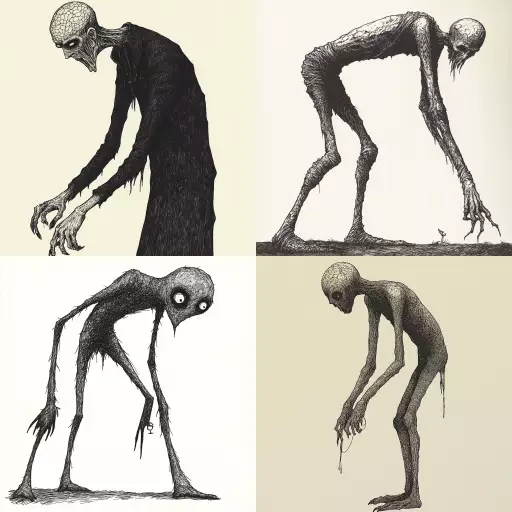Explore the Best AI Image Gallery

The AI Canvas: Navigating the Ethical Landscape of Generated Media
Artificial intelligence (AI) is rapidly transforming various aspects of our lives, and the realm of creative content generation is no exception. From realistic images to captivating music compositions, AI-powered tools are pushing the boundaries of whats possible, sparking both excitement and apprehension within the creative industry. This blog post delves into this fascinating landscape, exploring the potential uses of AI-generated media, its profound impact on the creative sector, and the crucial ethical considerations that demand our attention.
The Creative Potential Unleashed
AI-generated media offers a plethora of opportunities for artists, designers, and content creators. Imagine:
- Streamlined workflows: AI can automate repetitive tasks, freeing up creative professionals to focus on higher-level conceptualization and artistic expression.
- Novel artistic expressions: AI algorithms can generate unique and unexpected creations, pushing the boundaries of conventional art forms and inspiring fresh perspectives.
- Personalized content: AI can tailor content to individual preferences, creating immersive experiences that resonate deeply with specific audiences.
- Democratization of creativity: AI tools can empower individuals without formal artistic training to create compelling content, fostering greater inclusivity and accessibility in the creative sphere.
Transforming Industries
The impact of AI-generated media extends far beyond the realm of fine arts. Its poised to revolutionize numerous industries:
- Advertising and marketing: AI can generate personalized ads, dynamic content, and captivating visuals, enhancing engagement and effectiveness.
- Entertainment: Imagine AI creating realistic character animations, generating original music scores, or even writing scripts for films and video games.
- Education: AI-powered tools can create interactive learning experiences, generate personalized study materials, and provide real-time feedback to students.
- Design and architecture: AI can assist in creating innovative designs, optimizing layouts, and visualizing complex architectural concepts.
Navigating the Ethical Crossroads
While the potential of AI-generated media is undeniable, it also raises significant ethical concerns that require careful consideration:
- Copyright and ownership: Who owns the rights to AI-generated content? Is it the creator of the AI algorithm, the user who inputs the prompts, or the AI itself?
- Bias and fairness: AI algorithms are trained on massive datasets, which can reflect existing societal biases. This can result in biased or discriminatory outputs, perpetuating harmful stereotypes.
- Misinformation and manipulation: AI-generated content can be used to create convincing fake news, deepfakes, or propaganda, posing a serious threat to truth and trust.
- Job displacement: The automation potential of AI may lead to job losses in creative industries, requiring reskilling and adaptation.
- Transparency and accountability:** Its crucial to understand how AI algorithms make decisions and ensure that there are mechanisms for addressing any unintended consequences or biases.
Shaping the Future Responsibly
As we navigate this rapidly evolving landscape, its imperative to foster a responsible and ethical approach to AI-generated media. This requires:
- Open dialogue and collaboration:** Encouraging conversations between technologists, artists, ethicists, policymakers, and the general public to shape the development and deployment of AI.
- Regulation and guidelines: ** Establishing clear legal frameworks and ethical guidelines to address issues such as copyright, bias, and misinformation.
- Education and awareness:** Promoting public understanding of AI technologies, their capabilities, and potential impacts.
- **Continuous research and development:** Investing in research to mitigate risks, enhance transparency, and explore the full creative potential of AI while upholding ethical values.
The AI canvas is vast and brimming with possibilities. By embracing a responsible and collaborative approach, we can harness the power of AI to unlock new dimensions of creativity while safeguarding the integrity of artistic expression and ensuring a future where technology empowers human ingenuity.




](https://images.ai-img.art/thumbnails/150/f67d9af3398150f2ab1bcf250717fea134275e2ca896252b54a4d9bb3719f9ac.webp)



](https://images.ai-img.art/thumbnails/150/f9584153b4cddd8c9fab611dc10247549b275c59bc173251e37d0935874f9deb.webp)






















](https://images.ai-img.art/thumbnails/150/c2c9c48b38fae37f0a457b80b084ed01ba803810fc8f488c8f610c03abc74049.webp)

](https://images.ai-img.art/thumbnails/150/4289d1230b86a96c4d556636c3167bed0ef38f850826549517e4e45db4d87bf7.webp)

](https://images.ai-img.art/thumbnails/150/008b5d5d49667cc2e93a5f8a8adfaa545963da99c39ff0901f5296294636400d.webp)


](https://images.ai-img.art/thumbnails/150/bddf3ae4a232290858389b933c866ad3be429ef2e25c23a9f4d7713ed6e44d0b.webp)


